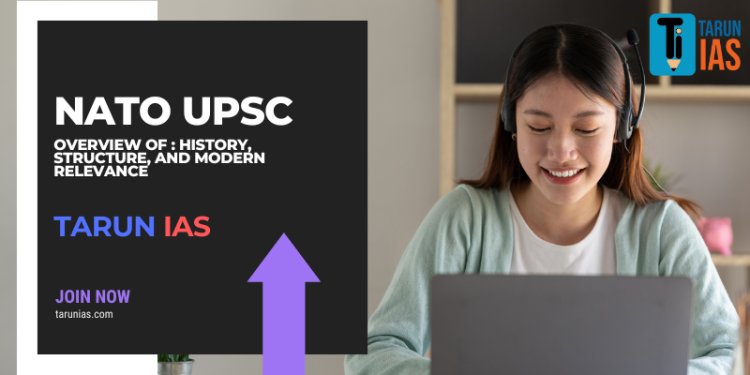Overview of NATO UPSC: History, Structure, and Modern Relevance
The North Atlantic Treaty Organization (NATO) is one of the most significant military alliances in modern global history. It plays a critical role in maintaining peace and security across member nations, particularly in Europe and North America. Understanding NATO UPSC especially those preparing for topics related to international organizations, global security, and India’s foreign relations..
Share this Post to earn Money ( Upto ₹100 per 1000 Views )

The North Atlantic Treaty Organization (NATO) is one of the most significant military alliances in modern global history. It plays a critical role in maintaining peace and security across member nations, particularly in Europe and North America. Understanding NATO UPSC especially those preparing for topics related to international organizations, global security, and India’s foreign relations..
1. History of NATO
NATO was formed in the aftermath of World War II to counter the growing threat posed by the Soviet Union and its communist ideology. The treaty was signed on April 4, 1949, in Washington, D.C., marking the official birth of the organization. Initially, NATO had 12 founding members, including the United States, Canada, and several Western European countries. The primary objective of NATO at that time was to create a collective defense mechanism where an attack on one member would be considered an attack on all.
2. Structure of NATO
NATO's organizational structure is designed to ensure collective decision-making and effective coordination among its member nations. It consists of several key components:
-
North Atlantic Council (NAC): The NAC is the principal political decision-making body of NATO, comprising representatives from all member nations. It is chaired by the NATO Secretary-General and is responsible for major decisions related to the alliance’s policies and strategies.
-
Secretary-General: The Secretary-General is NATO’s chief administrative officer and spokesperson, responsible for facilitating discussions, ensuring decisions are implemented, and representing NATO UPSC globally. The position is generally held by a European leader, with the current Secretary-General being Jens Stoltenberg from Norway.
-
Military Committee: Comprising the Chiefs of Defense from all NATO member states, the Military Committee is responsible for advising the NAC on military matters and formulating defense strategies. It plays a crucial role in operational planning and coordination.
-
Supreme Headquarters Allied Powers Europe (SHAPE): SHAPE is the central military command of NATO, located in Belgium. The Supreme Allied Commander Europe (SACEUR), a position traditionally held by a U.S. military officer, heads this body.
3. Modern Relevance of NATO
Although NATO was formed during the Cold War era to counter the Soviet Union, its role has evolved significantly in the post-Cold War world. Following the collapse of the Soviet Union, NATO shifted its focus from merely defending Europe from the Soviet threat to addressing new global challenges such as terrorism, cyberattacks, and emerging security threats.
-
Expansion of Membership: Since its inception, NATO has expanded from 12 founding members to 31 members, with countries from Eastern Europe and the Balkans joining the alliance after the Cold War. This expansion has brought NATO closer to Russia’s borders, causing tension between NATO and Russia, especially with regard to Ukraine
-
NATO and Counterterrorism: In the modern era, NATO has played an important role in global counterterrorism efforts. After 9/11, NATO invoked Article 5 and provided support for the U.S. in its operations in Afghanistan. NATO-led forces also conducted peacekeeping operations in Bosnia, Kosovo, and Libya, underscoring the organization's commitment to global peace and security.
-
Challenges and Criticism: Despite its significance, NATO faces several modern-day challenges. The most pressing issue is the division among member states regarding military spending and the sharing of defense burdens. The U.S. has consistently urged European members to increase their defense spending to meet the agreed-upon target of 2% of GDP. Moreover, the ongoing conflict between Russia and Ukraine has heightened tensions, with NATO providing substantial support to Ukraine, despite it not being a member.
Conclusion
NATO UPSC role in the world continues to be of immense importance in the current geopolitical landscape. As a military and political alliance, its structure ensures that member states cooperate in collective defense, crisis management, and cooperative security. For UPSC aspirants, understanding NATO's history, structure, and modern-day relevance is crucial in gaining a deeper insight into global diplomacy and security affairs. With NATO's evolving role in world politics, its significance is likely to remain relevant for years to come














